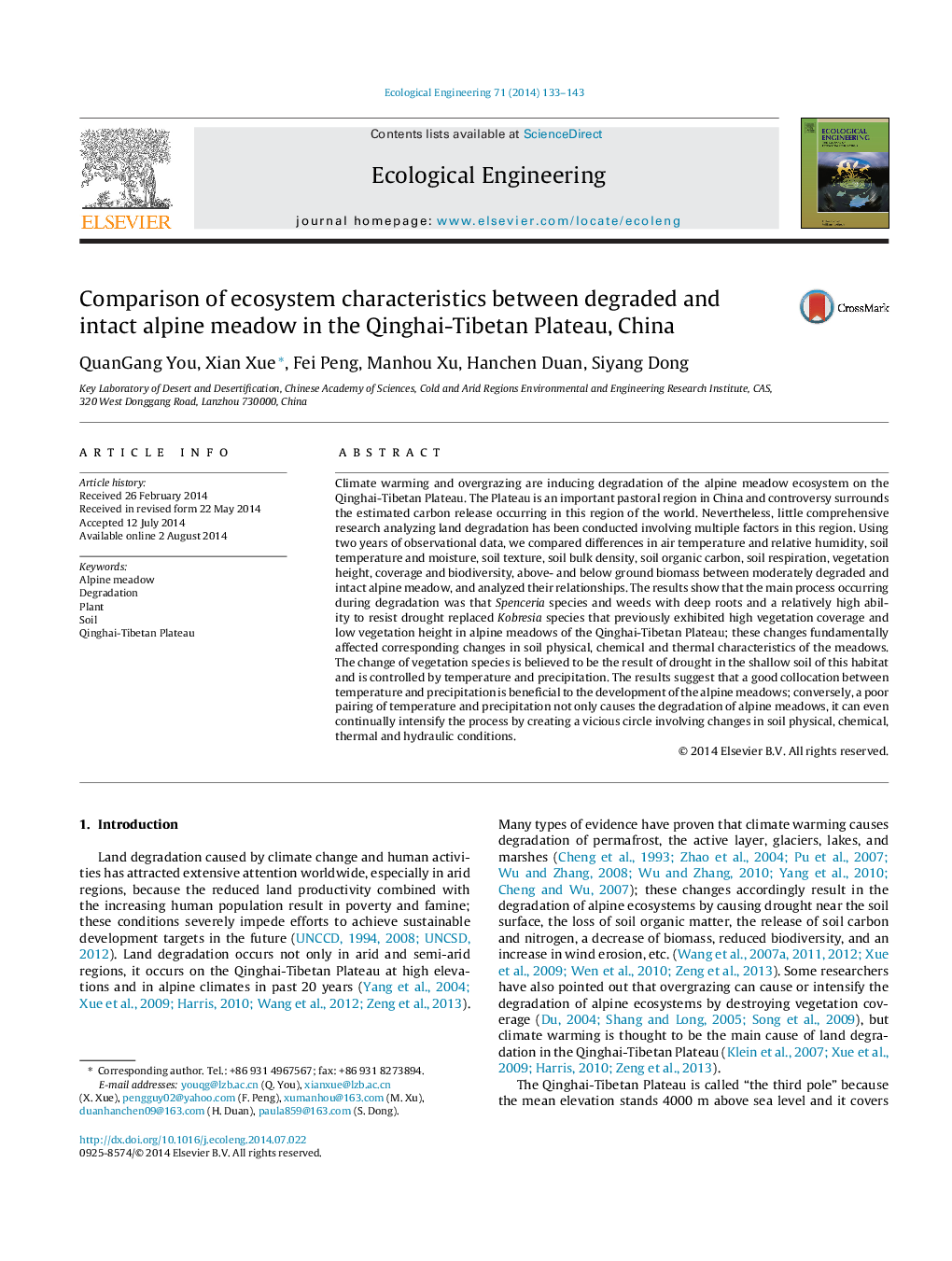| Article ID | Journal | Published Year | Pages | File Type |
|---|---|---|---|---|
| 4389148 | Ecological Engineering | 2014 | 11 Pages |
•Drought causes the alpine meadow ecosystem degradation on Tibetan Plateau.•Community succession is the initial presentation of ecosystem degradation.•Plant change results the change of soil physical and chemical characters.•Single or a few factors cannot be used to judge the degradation of ecosystem.
Climate warming and overgrazing are inducing degradation of the alpine meadow ecosystem on the Qinghai-Tibetan Plateau. The Plateau is an important pastoral region in China and controversy surrounds the estimated carbon release occurring in this region of the world. Nevertheless, little comprehensive research analyzing land degradation has been conducted involving multiple factors in this region. Using two years of observational data, we compared differences in air temperature and relative humidity, soil temperature and moisture, soil texture, soil bulk density, soil organic carbon, soil respiration, vegetation height, coverage and biodiversity, above- and below ground biomass between moderately degraded and intact alpine meadow, and analyzed their relationships. The results show that the main process occurring during degradation was that Spenceria species and weeds with deep roots and a relatively high ability to resist drought replaced Kobresia species that previously exhibited high vegetation coverage and low vegetation height in alpine meadows of the Qinghai-Tibetan Plateau; these changes fundamentally affected corresponding changes in soil physical, chemical and thermal characteristics of the meadows. The change of vegetation species is believed to be the result of drought in the shallow soil of this habitat and is controlled by temperature and precipitation. The results suggest that a good collocation between temperature and precipitation is beneficial to the development of the alpine meadows; conversely, a poor pairing of temperature and precipitation not only causes the degradation of alpine meadows, it can even continually intensify the process by creating a vicious circle involving changes in soil physical, chemical, thermal and hydraulic conditions.
